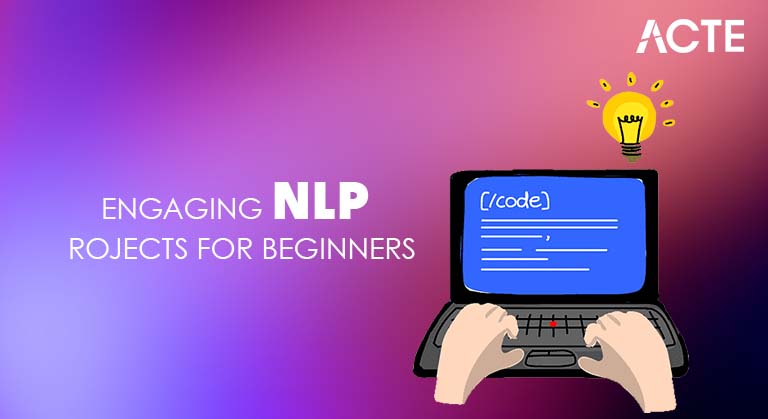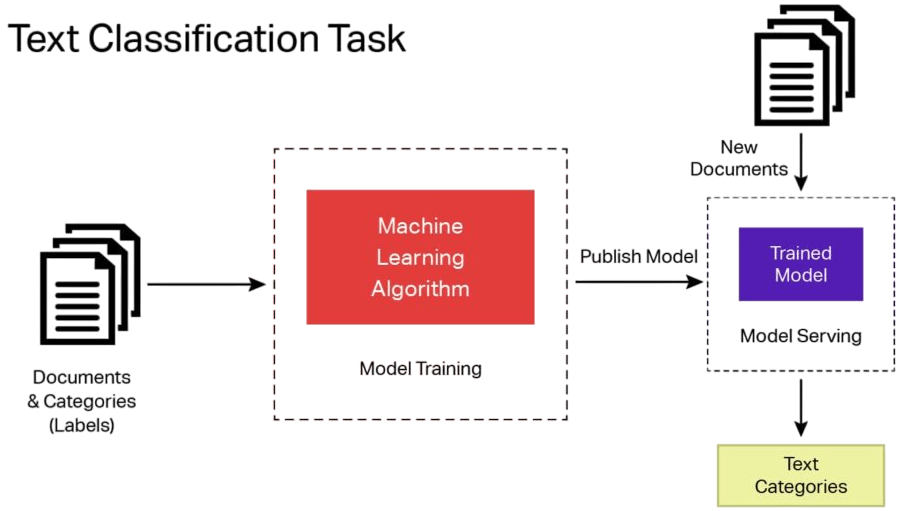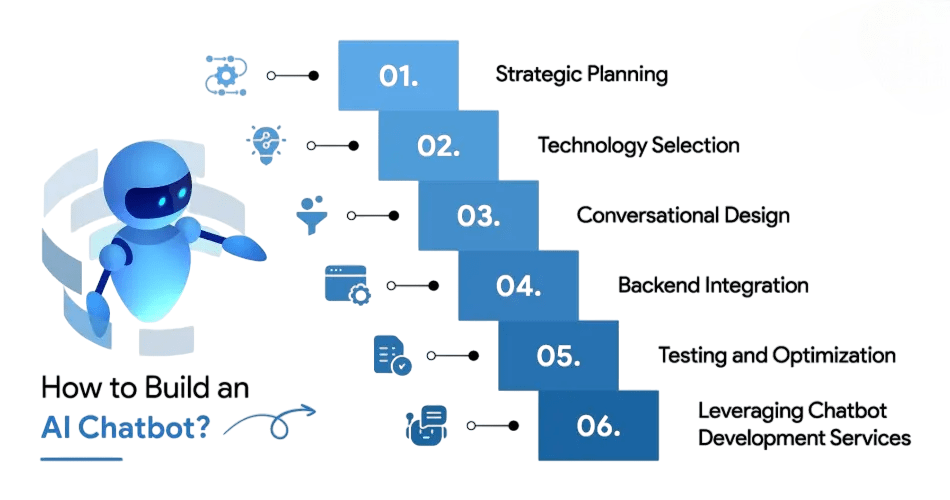
- Introduction to Natural Language Processing
- Text Classification Project
- Sentiment Analysis
- Named Entity Recognition
- Chatbot Development
- Text Summarization
- Spell Checker Project
- Language Translation
- Text-to-Speech System
- Conclusion
Introduction to Natural Language Processing
NLP Projects for Beginners are an excellent way to get started in the exciting field of Natural Language Processing (NLP), which combines linguistics, computer science, and machine learning. NLP enables computers to understand, generate, and interpret human language. By connecting unstructured text to usable insights, NLP is transforming technology across various industries from customer support chatbots to medical diagnostics. Machine Learning Training plays a central role in NLP, where key processes like text preprocessing help practitioners clean and prepare data using techniques such as tokenization and stop-word removal. They also represent features through methods like Bag-of-Words and word embeddings. Modeling techniques can include traditional machine learning algorithms as well as deep learning approaches, such as Recurrent Neural Networks and Transformers. This guide offers creative NLP Projects for Beginners that showcase the flexibility and potential of NLP technologies. It provides both practitioners and enthusiasts with a clear roadmap to explore and harness the power of language-driven computational intelligence.
Ready to Get Certified in Machine Learning? Explore the Program Now Machine Learning Online Training Offered By ACTE Right Now!
Text Classification Project
In this text classification project, we developed a machine learning model that sorts news articles into specific topics with high accuracy. To implement structured decision-making in classification tasks, explore Decision Trees in Machine Learning. We began by gathering a solid dataset of 10,000 labeled news articles covering politics, sports, and technology. We preprocessed the text by cleaning punctuation, tokenizing, and removing stop words to improve feature quality. We converted the raw text into meaningful numerical forms using techniques like TF-IDF and embeddings.

We tested several algorithms, including Logistic Regression, Support Vector Machines, and neural network models. We evaluated the model’s performance through key metrics such as accuracy, precision, recall, and F1-score. During the development process, we focused on optimizing hyperparameters and refining feature engineering methods. This project not only demonstrated our ability to build effective machine learning pipelines but also provided insights into common issues like class imbalance, ultimately delivering a strong text classification solution.
Sentiment Analysis
To understand how machines interpret and classify data, explore Pattern Recognition and Machine Learning. Infer the sentiment (positive, neutral, negative) expressed in text such as tweets, reviews, or feedback.
Workflow
- Use labeled datasets like IMDB reviews or Twitter sentiment.
- Preprocess including contractions, emojis, slang normalization.
- Feature representation: embeddings and sometimes sentiment lexicons (e.g., VADER).
- Train classification models.
- Analyze output, possibly with confusion matrices.
- Deploy as API or integrate into dashboards.
Enhancements
- Use pretrained transformer models (BERT).
- Explore domain adaptation with custom datasets.
- Use annotated corpora (CoNLL-2003, spaCy validator).
- Preprocess and annotate text.
- Train NER model: CRF, BiLSTM-CRF, or transformer-based architectures.
- Evaluate using precision, recall, F1 (entity-level).
- Visualize output in applications like news scraping or resume parsing.
- Knowledge graph generation.
- Customer feedback analysis.
- Job portal automation.
- Use word frequency from corpora such as English Wikipedia or Gutenberg.
- Implement edit-distance corrections (Levenshtein distance).
- Use noisy channel model: compare likelihood of errors.
- Enhance with context: use language models to choose correct words.
- Evaluate accuracy using test sets of misspelled words.
- Handle slang or domain‑specific jargon.
- Add auto-suggestions in autocomplete interfaces.
- Rule- or phrase-based MT: on small datasets.
- Neural MT: using seq2seq models, attention, or transformers (T5, MarianMT).
- Use parallel corpora (Opus, Europarl).
- Preprocess (clean, tokenization, BPE).
- Train translation model.
- Evaluate via BLEU score.
- Serve via API.
- Add beam search or transformer optimizations.
- Deploy on mobile/edge with pruning or quantization.
To Explore Machine Learning in Depth, Check Out Our Comprehensive Machine Learning Online Training To Gain Insights From Our Experts!
Named Entity Recognition (NER)
Automatically detect and categorize entities in text: people, locations, organizations, dates.
Workflow
Applications
Chatbot Development
To develop an intelligent conversational agent, you need a clear and thorough approach. Your main goal is to create a chatbot that understands user intent and provides accurate, relevant responses. Machine Learning Training begins by defining the bot’s specific purpose, such as a customer service FAQ assistant or a booking platform. Next, practitioners gather sample dialogues to carefully categorize potential user intents.

Set up a strong natural language processing (NLP) pipeline that uses techniques like intent classification, entity extraction, and response generation. Use frameworks like Rasa, Dialogflow, or Microsoft Bot Framework to streamline development. Include best practices such as fallback intents for unknown queries and engaging responses to ensure a smooth user experience. Test the bot rigorously through real conversations and refine it regularly for ongoing improvement. This will help you deploy it across popular messaging platforms like Facebook Messenger and Telegram.
Text Summarization
Our software development project aims to change how we summarize documents. We are building an intelligent platform that turns lengthy documents into clear, meaningful summaries. We use both extractive and abstractive methods, employing algorithms like TextRank and machine learning models such as BART and T5 to create accurate and coherent summaries. For insights into compensation trends, explore the Machine Learning Engineer Salary. Our workflow includes careful document collection, thorough preprocessing steps like cleaning and tokenization, and organized summarization methods. We designed the solution to assess summary quality using ROUGE scores. Users can easily access it through a simple web interface or computational notebook. Our technology has practical uses, from quickly summarizing complex medical reports to shortening long PDF documents, making information easier to access and improving efficiency in various professional fields.
Looking to Master Machine Learning? Discover the Machine Learning Expert Masters Program Training Course Available at ACTE Now!
Spell Checker Project
Implement a spell checker that detects and corrects typos.
Workflow
Extensions
Language Translation
Create an English–French translation pipeline.
Approaches
Workflow
Enhancements
Preparing for Machine Learning Job Interviews? Have a Look at Our Blog on Machine Learning Interview Questions and Answers To Ace Your Interview!
Text-to-Speech (TTS) System
Text-to-Speech (TTS) technology offers a solid way to turn written English into natural-sounding audio. It uses both commercial and open-source tools like Google TTS, Amazon Polly, eSpeak, and Mozilla TTS. To streamline your AI workflow, explore the latest Machine Learning Tools. The workflow involves careful text preprocessing, which includes normalizing numbers, managing abbreviations, and improving punctuation. By using pretrained models, the system produces high-quality speech output and matches text with audio using International Phonetic Alphabet (IPA) or phoneme conversion techniques. In the last stage, the process improves audio quality by adjusting prosody. This creates a more human-like and engaging listening experience, ensuring smooth and genuine spoken communication.
Conclusion
This guide offers a clear path for mastering Natural Language Processing (NLP) projects for beginners and intermediates. Machine Learning Training focuses on building end-to-end pipelines, using the right tools and techniques, and improving model performance through careful error analysis. This approach helps learners create a strong skill set. The guide covers various domains, including classification, transformers, named entity recognition, chatbots, text-to-speech, resume parsing, and translation. It provides a well-rounded approach to Natural Language Processing development. By regularly working on these NLP projects for beginners and showing their results through engaging demonstrations, participants will strengthen their NLP basics and prepare for real-world challenges. This organized learning path also boosts professional portfolios and enhances job prospects in the fast-changing fields of artificial intelligence and machine learning.



